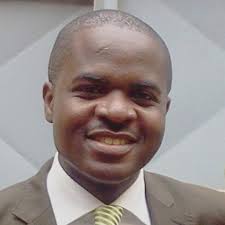Caractéristiques des opérateurs du post traitement en imagerie tomodensitométrique thoracique dans les hôpitaux de référence en Côte d’Ivoire.
DOI:
https://doi.org/10.55715/jaim.v13i4.282Keywords:
CT scan, Post processing, Ivory Coast.Abstract
Objective: To analyse the profile and knowledge of the operators and their application of post-processing in CT imaging in our hospital practice.
Material and method: Cross-sectional study carried out over 32 weeks in the imaging departments of the 3rd level hospitals of the health pyramid of Côte d'Ivoire. It concerned senior and junior radiologists, trainee doctors and radiology interns with more than 4 semesters of training. Socio-professional parameters, knowledge and characteristics of post treatment use were studied.
Results: We registered 79 operators. Juniors represented 58.2% of the respondents. Sex ratio was 2.1 and the average age was 37.4 years. In 65-83%, the practitioners partially identified all the main post-processing algorithms, useful for the diagnosis and follow-up of common thoracic pathologies. The post processing algorithms were underused. 3D surface, CAD and quantification were never used because 24.3% of the participants had never heard of them, 68.2% did not know how to use them and 7.6% did not know how to find them on their post treatment station. The majority (80.3%) of respondents had not received any specific training in post processing.
Conclusion: Post-processing in thoracic CT was insufficiently known and under-used by radiologists due to a lack of specific training.
RESUME
Objectif : Analyser le profil des opérateurs, leur connaissance et application du post-traitement en imagerie TDM dans notre pratique hospitalière.
Matériels et méthodes : Étude transversale réalisée sur 32 semaines, au sein des services d’imagerie des hôpitaux de 3ème niveau de la pyramide sanitaire de Côte d’Ivoire. Elle a concerné les radiologues séniors et juniors, médecins apprenants et internes en radiologie ayant plus de 4 semestres de formation. Les paramètres socio-professionnels, la connaissance et les caractéristiques d’utilisation du post traitement ont été étudiés.
Résultats : Nous avons recensé 79 opérateurs. Les juniors représentaient 58,2% des répondants. Le sex ratio était de 2,1 et l’âge moyen de 37,4 ans. Dans 65 à 83% des cas, les praticiens ont partiellement identifié tous les principaux algorithmes de post traitement, utiles au diagnostic et au suivi des pathologies thoraciques courantes. Les algorithmes de post traitement étaient sous utilisés. Le 3D surfacique, le CAD et la quantification n’étaient jamais utilisés car 24,3% des participants n’en avait jamais entendu parler, 68,2% ne savaient pas les utiliser et 7,6% ne savait pas les retrouver sur leur station de post traitement. La majorité (80,3%) des répondants n’avait pas reçu de formation spécifique en post traitement.
Conclusion : Le post traitement en TDM thoracique était insuffisamment connu et sous utilisé par les radiologues en raison d’une insuffisance de formation spécifique.
Downloads
References
2. Perrone L, Politi M, Foschi R, Masini V, Reale F, Costantini AM, Marano P. Post-processing of digital images. Rays 2003. 28 (1): 95-101.
3. Salgado R, Mulkens T, Ozsarlak O, De Schepper AM, Parizel PA. CT angiography: basic principles and post-processing applications. Journal Belge de Radiologie – Belgisch Tijdschrift voor Radiologi, 2003. 86 (6): 336-40.
4. Mezrich R, Juluru K, Nagy P. Should Post-Processing Be Performed by the Radiologist? Journal of Digital Imaging, 2011. 24: 378–381.
5. Walsh SLF, Nair A, Hansell DM. Post-processing applications in thoracic computed tomography. Clinical Radiology 68 (2013) 433-48
6. Conseil national de l’ordre des médecins de France. 2020. Profil des médecins en 2019. Internet. Consulté le 26/12/2020. Disponible sur: https://www.conseil-national.medecin.fr
7. Institut national de la statistique de Côte d’Ivoire. 2020. Recensement général de la population 2014. Internet. Consulté le 29/12/2020. Disponible sur: http://www.ins.ci/n/documents/RGPH2014_principaux_indicateurs.pdf.
8. Institut national de la statistique et des études économiques, France. 2020. Démographie de France. Internet. Consulté le 29/12/2020. Disponible sur: https://fr.wikipedia.org/wiki/Démographie_de_la_Frane
9. Maes S. Interprétation des scanners cérébraux urgents par les internes en imagerie médicale : validité. Congrès urgences. Paris, France 2002.
10. GE Healthcare Academy France. 2020. Internet. Consulté le 26/12/2020. Disponible sur: https://www.gehealthcare.fr/-/jssmedia/eca5ae3520c54b5fb4db98e776f3548a.pdf?la=fr-fr
11. Pyatigorskaya N. Enquête démographique : Quelle carrière pour un futur radiologue ? Radioactif, 2012. 9: 8-12
12. Beigelman-Aubry C, Hill C, Guibal A, Savatovsky J, Grenier PA. Multi-detector row CT and postprocessing techniques in the assessment of diffuse lung disease. Radiographics, 2005. 25 (6):1639-52
13. Ferretti GR, Jankowski A. Tomodensitométrie volumique : reconstructions 2D et 3D. Revue des Maladies Respiratoires (2010) 27, 1267-1274.
14. Bruguière E, Deux JF, Lapeyre M , Bouanane M, Luciani A, Kobeiter H et al. Post-traitement et comptes rendus en scanner cardiaque. Journal de radiologie, 2009. 90 (10): 1374-8.
Downloads
Published
How to Cite
Issue
Section
License

This work is licensed under a Creative Commons Attribution-NonCommercial-ShareAlike 4.0 International License. Copyright @2017. This is an open-access article distributed under the terms of the Creative Commons Attribution-NonCommercial-ShareAlike 4.0 International License (http://creativecommons.org/licenses/by-nc-sa/4.0/) which permits unrestricted non-commercial used, distribution and reproduction in any medium






